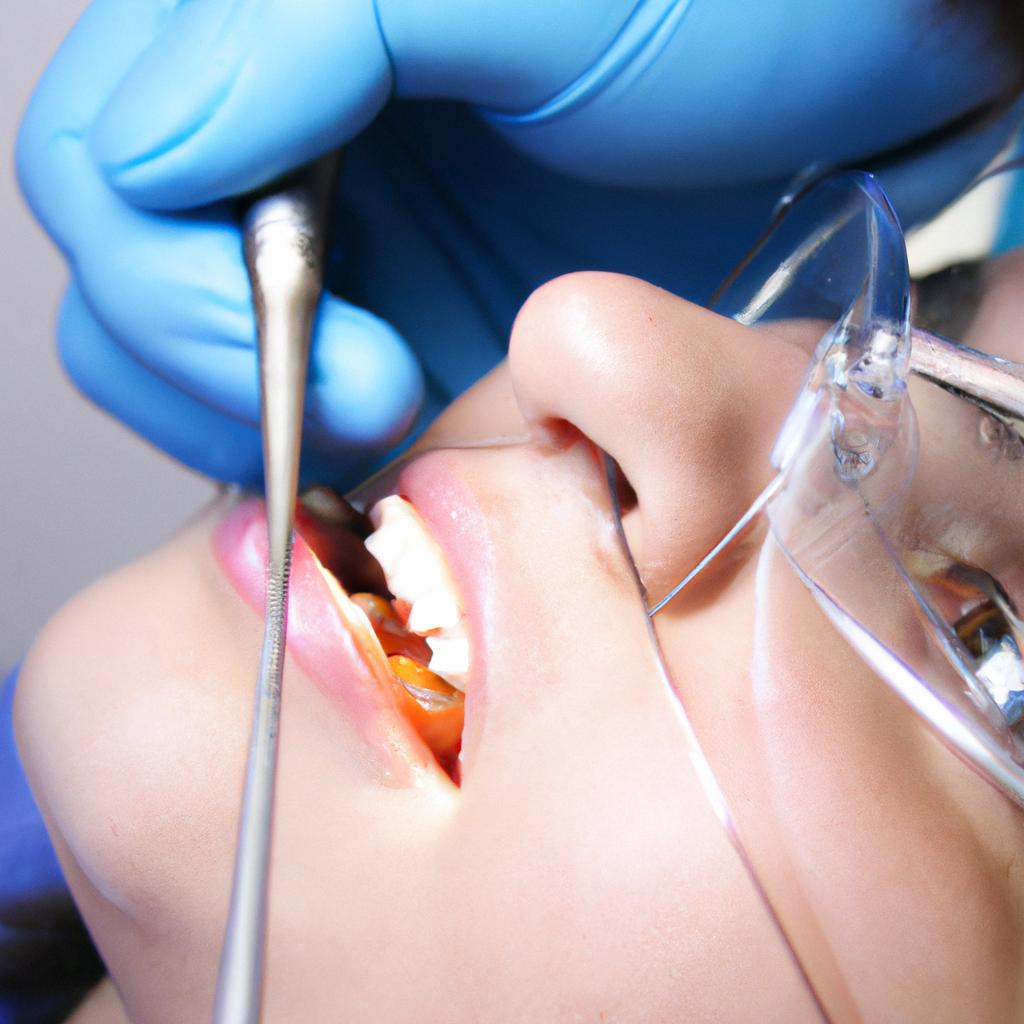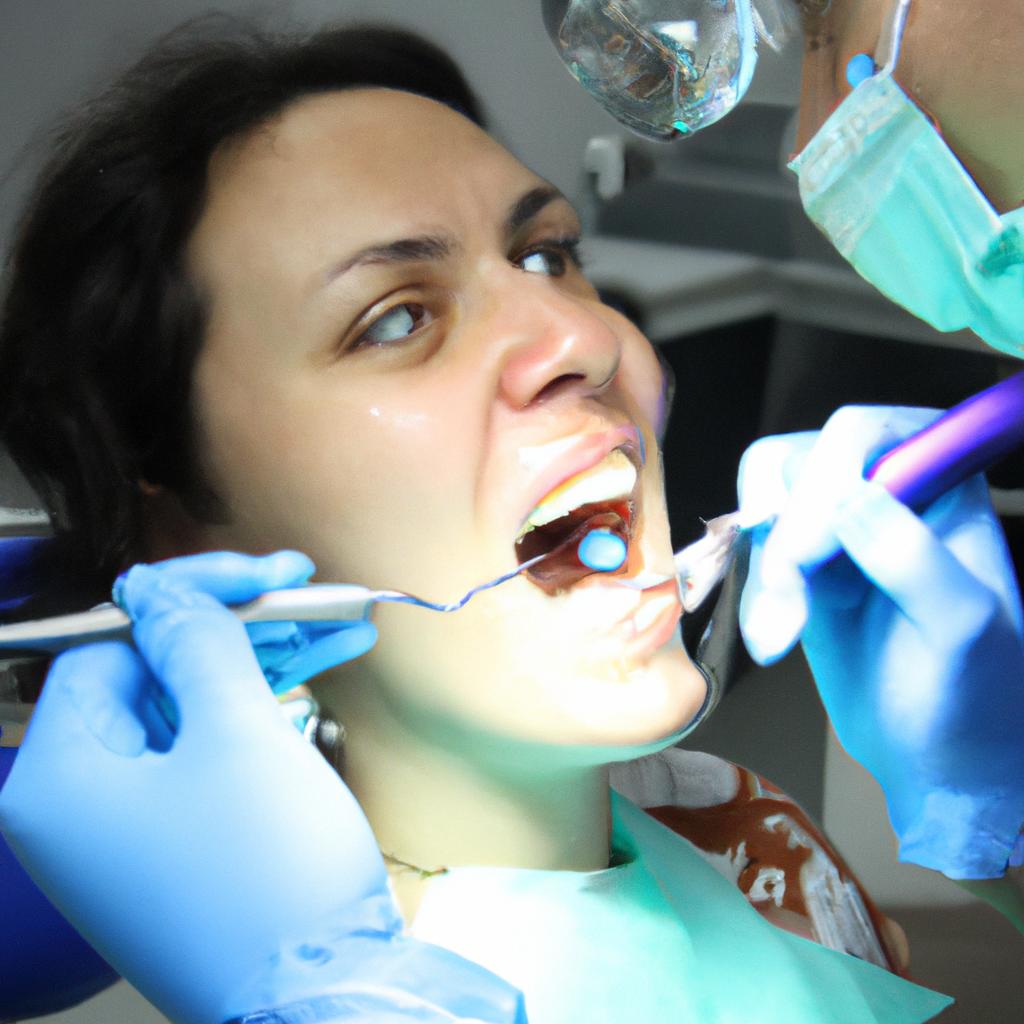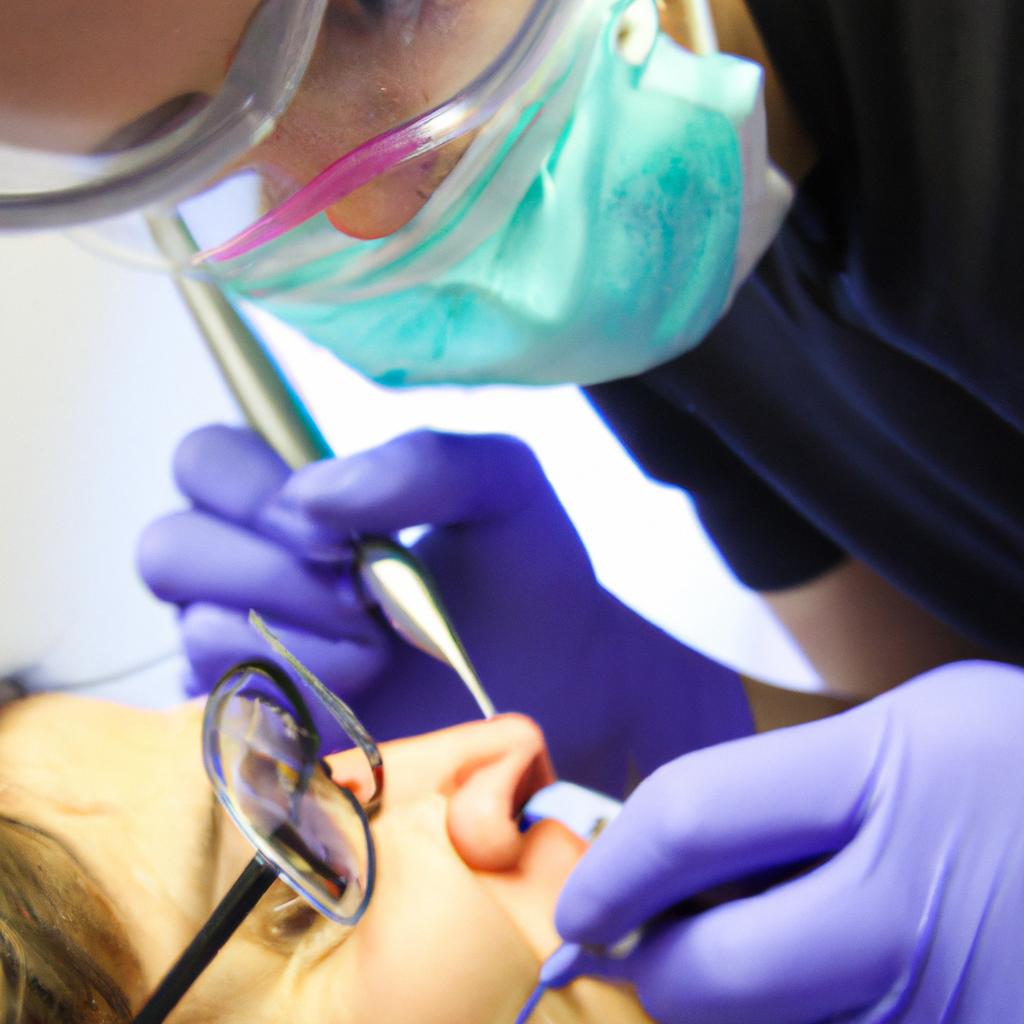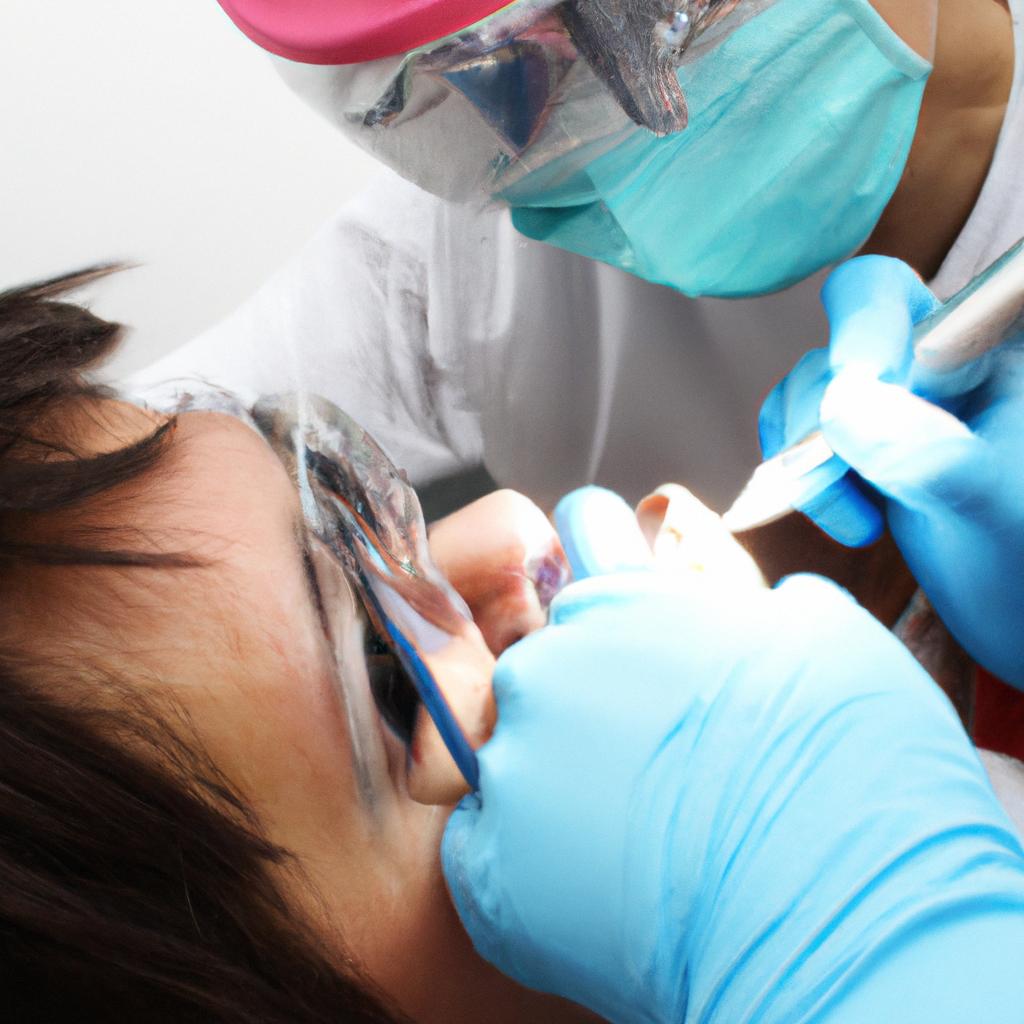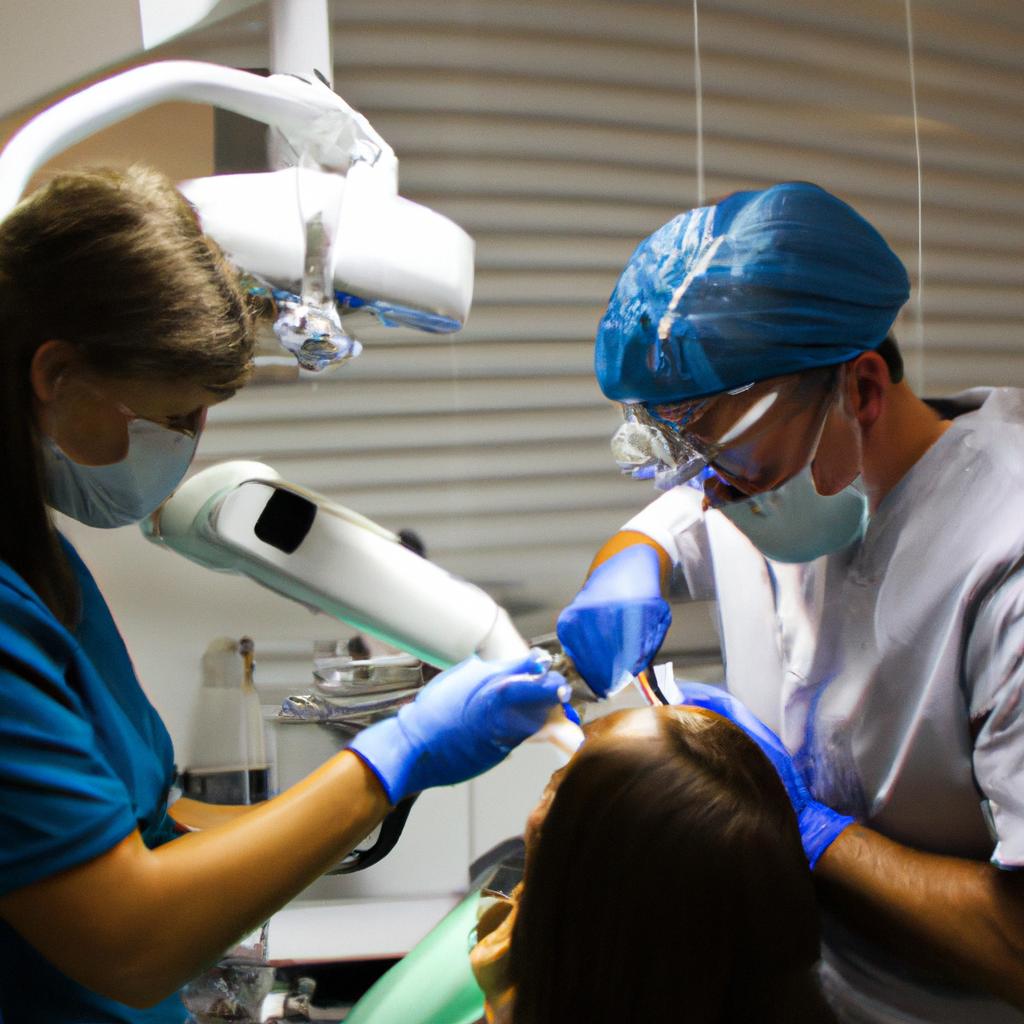Internal Bleaching in Endodontics: A Comprehensive Guide
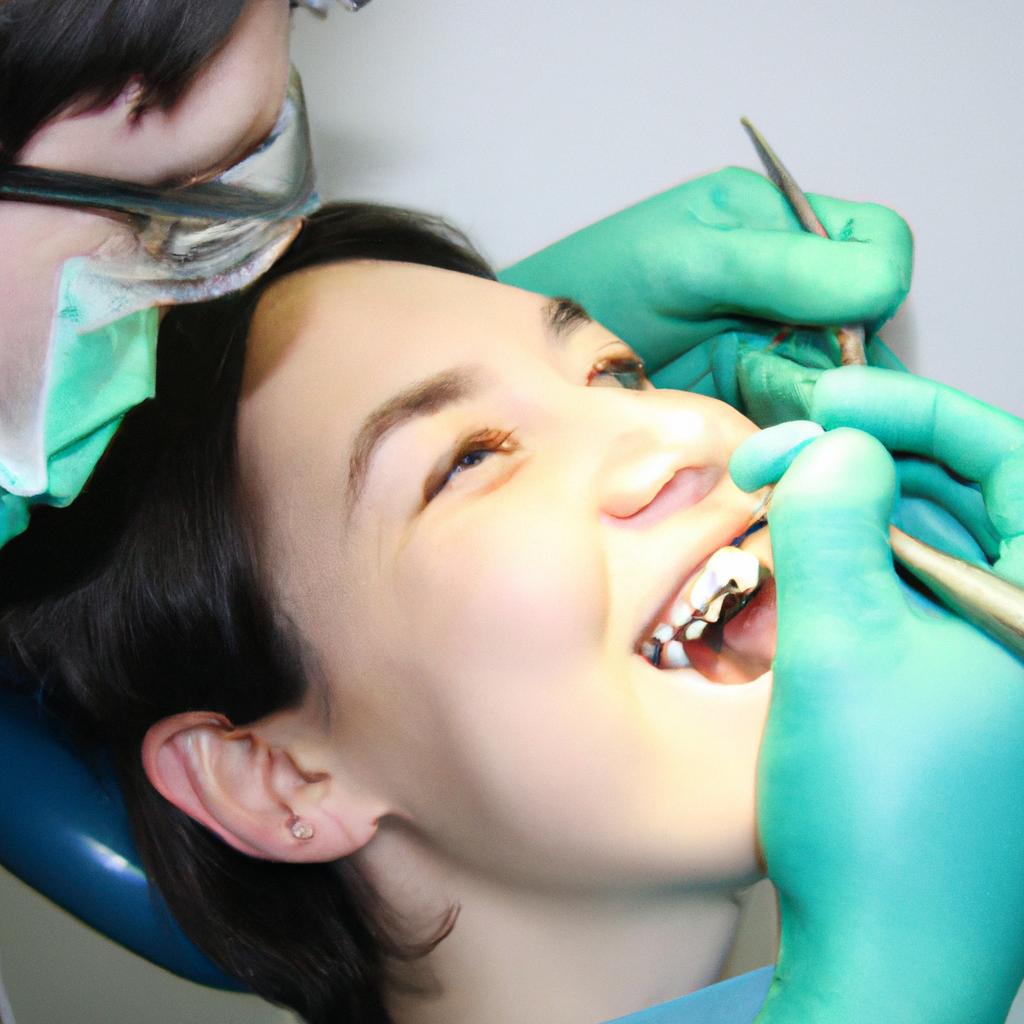
Internal bleaching is a commonly used technique in endodontics to address discolored teeth. This comprehensive guide aims to provide an in-depth understanding of internal bleaching procedures, their indications, contraindications, and potential complications. By analyzing both real-life case studies and hypothetical scenarios, this article will explore the various aspects of internal bleaching, equipping readers with the knowledge necessary to make informed decisions regarding patient treatment.
One such example involves a patient who presents with severe discoloration in a single anterior tooth due to previous trauma. In cases like these where external factors have caused intrinsic staining, internal bleaching can be an effective solution. However, it is crucial for dental professionals to approach each case individually and consider alternative treatment options based on factors such as the extent of discoloration, pulp vitality, and overall oral health. Through examining different clinical situations and outcomes, this article seeks to enhance clinicians’ ability to assess when internal bleaching may be suitable and achieve optimal results.
In addition to discussing specific cases, this article will also delve into the procedural techniques involved in performing internal bleaching. From assessing pulp status through radiographic examination to selecting appropriate intracoronal materials for achieving desired shade changes, all relevant steps will be explored comprehensively to ensure a thorough understanding of the process. The article will also provide detailed guidance on proper isolation techniques, bleaching agent application, and post-operative care to minimize potential complications and maximize the longevity of results.
Furthermore, this guide will address important considerations when it comes to contraindications for internal bleaching. Certain conditions such as pulp necrosis, periapical pathology, or extensive restorations may render the tooth unsuitable for this procedure. By highlighting these contraindications and presenting alternative treatment options, dental professionals can make well-informed decisions that prioritize patient safety and satisfaction.
Throughout the article, evidence-based research and clinical experience will be utilized to support the information presented. This ensures that readers have access to reliable and up-to-date knowledge regarding internal bleaching procedures. Additionally, potential complications such as external cervical resorption or tooth sensitivity will be discussed along with strategies for prevention and management.
In conclusion, this comprehensive guide aims to equip dental professionals with a thorough understanding of internal bleaching in order to make informed decisions about its use in appropriate cases. By exploring real-life examples, procedural techniques, contraindications, and potential complications alongside evidence-based information, readers will gain valuable insights into this effective technique for addressing discolored teeth.
Understanding Internal Bleaching
Internal bleaching is a commonly used technique in endodontics to improve the esthetics of discolored teeth. This procedure involves applying a bleaching agent directly into the pulp chamber of a non-vital tooth, with the aim of lightening the color of dentin from within. The concept behind internal bleaching lies in its ability to address intrinsic discoloration caused by factors such as trauma, pulpal necrosis, or certain medications.
To illustrate the effectiveness of internal bleaching, consider a hypothetical case study involving a patient who had previously undergone root canal treatment due to traumatic dental injury. Despite successful endodontic therapy, this individual remained dissatisfied with their smile due to persistent discoloration in the affected tooth. With limited options for traditional external whitening methods, internal bleaching was recommended as an alternative solution.
There are several reasons why internal bleaching has gained popularity among practitioners and patients alike:
- Minimally invasive: Unlike other cosmetic procedures such as veneers or crowns, internal bleaching requires minimal removal of tooth structure.
- Cost-effective: Compared to more extensive restorative treatments, internal bleaching can be a more affordable option for patients seeking esthetic improvement.
- Preserves natural tooth structure: By targeting only the discolored dentin internally, internal bleaching helps preserve the integrity of healthy enamel and dentin surrounding the treated tooth.
- Potential for long-term results: When performed correctly and followed by proper maintenance, internal bleaching can provide lasting improvements in tooth appearance.
Table 1 below summarizes various advantages associated with internal bleaching:
| Advantages |
|---|
| Minimally invasive |
| Cost-effective |
| Preserves natural tooth structure |
| Potential for long-term results |
In summary, understanding the principles and benefits of internal bleaching is crucial for both clinicians and patients considering this treatment modality. By utilizing minimally invasive techniques and preserving natural tooth structure, internal bleaching offers a viable option for improving the esthetics of discolored teeth.
Next, let us delve into the indications for internal bleaching without using “step” as a transition.
Indications for Internal Bleaching
In the previous section, we explored the concept of internal bleaching in endodontics. Now, let us delve deeper into the indications for this treatment modality and how it can be effectively used to restore dental aesthetics.
Indications for Internal Bleaching:
Internal bleaching is primarily indicated when a tooth has undergone root canal treatment (RCT) and subsequently developed discoloration or staining. This may occur due to various factors such as trauma, pulp necrosis, or certain medications. To provide a better understanding of its applicability, consider the case of a patient who had previously received RCT on their maxillary central incisor following an injury. Despite successful endodontic therapy, the tooth exhibited noticeable discoloration that affected the patient’s self-esteem.
To determine whether internal bleaching is suitable for a particular patient, several key factors should be considered:
- Discoloration severity: Internal bleaching is most effective when treating teeth with mild to moderate discoloration. Severe cases may require alternative approaches such as veneers or crowns.
- Tooth vitality: The success of internal bleaching relies on the presence of vital pulpal tissue within the treated tooth. Non-vital teeth may not respond well to this technique.
- Patient compliance: As internal bleaching often involves multiple visits and diligent home care by the patient, their commitment and willingness to follow instructions are crucial for achieving desirable outcomes.
- Patient expectations: Ensuring clear communication between the dentist and patient regarding realistic expectations plays a pivotal role in determining treatment suitability and overall satisfaction.
It is important to note that while internal bleaching can yield excellent results in many cases, each situation must be evaluated individually based on these considerations before proceeding with treatment.
Table: Potential Indications for Internal Bleaching
| Situation | Suitable for Internal Bleaching? |
|---|---|
| Mild discoloration after RCT | Yes |
| Non-vital tooth | No |
| Severe discoloration | Possibly |
| Patient with realistic expectations | Yes |
By carefully assessing these factors, clinicians can determine whether internal bleaching is the most appropriate solution for their patients. In the subsequent section about “Preparation and Isolation,” we will explore the necessary steps to ensure optimal outcomes during the procedure.
Preparation and Isolation
Indications for Internal Bleaching often arise in cases where a tooth has undergone root canal treatment and subsequent discoloration is observed. This procedure can help restore the natural appearance of the tooth, providing both aesthetic and functional benefits. For instance, consider a hypothetical case study where a patient presents with a discolored maxillary central incisor due to previous trauma resulting in necrosis within the pulp chamber. In such instances, internal bleaching may be an appropriate treatment option.
To ensure successful outcomes during Internal Bleaching procedures, proper preparation and isolation techniques are crucial. The first step involves obtaining access to the pulp chamber through endodontic access cavity preparation. It is important to remove any gutta-percha or other intracanal materials obstructing direct access to the pulp chamber. Following this, careful cleaning and shaping of the root canal system should be performed to eliminate any residual debris or contaminants that could interfere with the bleaching process.
Isolation plays a vital role in ensuring effective internal bleaching by preventing contact between the bleaching agent and surrounding soft tissues. Rubber dam placement offers superior isolation compared to cotton rolls or other methods as it provides complete coverage of adjacent teeth and gingival tissues while minimizing contamination risks from saliva or blood. Additionally, using light-cured resin-modified glass ionomer cement (RMGIC) as an interim coronal seal further enhances isolation efficacy.
During internal bleaching procedures, it is essential to adhere to certain precautions:
- Carefully examine radiographs before initiating treatment
- Follow manufacturer instructions for bleach application
- Monitor closely for signs of complications during and after treatment
- Provide post-treatment care instructions regarding oral hygiene practices
By following these guidelines, clinicians can minimize potential risks associated with internal bleaching procedures and maximize favorable outcomes for their patients.
In the upcoming section on “Bleaching Agents and Techniques,” we will explore various options available for achieving optimal results during internal bleaching treatments. Understanding the different bleaching agents and techniques is crucial for selecting the most suitable approach based on individual patient needs and case-specific factors.
Bleaching Agents and Techniques
Having discussed the importance of preparation and isolation in internal bleaching, we now delve into the various bleaching agents and techniques commonly employed in endodontic procedures. By understanding these methods, practitioners can effectively achieve desirable outcomes while minimizing potential risks. In this section, we explore the diverse range of bleaching agents available for use and their associated techniques.
To illustrate the practical application of different bleaching agents, let us consider a hypothetical case study involving a 40-year-old patient who presents with severe discoloration in tooth #21 due to previous trauma. The goal is to restore the natural color of the tooth through internal bleaching.
When selecting an appropriate bleaching agent, several factors come into play. Here are some key considerations:
- Concentration: Bleach concentrations ranging from 10% to 35% carbamide peroxide or hydrogen peroxide may be used depending on individual cases.
- Application time: Treatment duration varies based on the desired outcome and extent of discoloration.
- Technique: Different techniques like walking bleach, thermocatalytic technique, or laser-assisted bleaching may be employed based on clinician preference and patient suitability.
- Safety measures: Proper protective barriers such as rubber dams should always be utilized during treatment to isolate the target area effectively.
Table: Comparison of Commonly Used Bleaching Agents
| Bleaching Agent | Advantages | Disadvantages |
|---|---|---|
| Hydrogen Peroxide | – Fast acting | – Potential pulp irritation |
| Carbamide Peroxide | – Less likely to cause sensitivity | – Longer treatment duration required |
| Sodium Perborate | – Effective for non-vital teeth | – Staining potential |
The choice of bleaching agent ultimately depends on multiple factors unique to each patient, including the location of discoloration and individual preferences. It is crucial to weigh both advantages and disadvantages before proceeding with any particular agent or technique.
By acquiring a thorough understanding of the available bleaching agents and their associated techniques, endodontic practitioners can confidently select the most suitable approach for each patient’s specific needs. This knowledge empowers them to achieve desirable outcomes while ensuring patient safety and comfort throughout the internal bleaching process.
With an awareness of different bleaching agents established, we now shift our focus towards monitoring and evaluating treatment progress in order to optimize results.
Monitoring and Evaluation
Transitioning from the previous section on “Bleaching Agents and Techniques,” it is essential to discuss the monitoring and evaluation protocols in internal bleaching procedures. By closely monitoring the progress of a patient’s treatment, dental professionals can ensure its effectiveness and make necessary adjustments if needed.
To illustrate this point, let us consider a hypothetical case study. Mr. A presents with severe discoloration due to endodontic treatment on his maxillary central incisor. After applying an intracoronal bleaching agent, such as sodium perborate mixed with distilled water or hydrogen peroxide gel, the dentist will need to monitor the tooth’s response over time. This process involves regular follow-up appointments at specific intervals determined by individual cases.
Monitoring for potential complications during internal bleaching is crucial. The following bullet points outline key aspects that should be assessed throughout the treatment:
- Tooth sensitivity levels
- Soft tissue irritation or inflammation
- Any signs of root resorption
- Overall color change progression
A systematic approach to evaluating these factors ensures comprehensive monitoring and allows for timely intervention if required. To facilitate understanding, below is an example table summarizing different stages of assessment within each appointment:
| Appointment | Assessment Areas |
|---|---|
| 1 | Baseline examination |
| 2 | Tooth sensitivity |
| Color comparison | |
| 3 | Root condition |
| Tissue health | |
| Bleaching progression |
In conclusion, proper monitoring and evaluation play vital roles in internal bleaching procedures. Regular assessments allow dental practitioners to track progress, identify any adverse effects promptly, manage patient expectations effectively, and modify treatment plans accordingly.
Moving forward into the subsequent section about “Potential Complications and Management,” dentists must remain vigilant in their evaluations to address any challenges that may arise while ensuring successful outcomes for patients undergoing internal bleaching procedures.
Potential Complications and Management
Having discussed the importance of monitoring and evaluation in internal bleaching procedures, it is now essential to address potential complications that may arise during or after the treatment. Understanding these complications and having a comprehensive management plan in place can help ensure successful outcomes for patients undergoing endodontic procedures.
Complications such as tooth sensitivity, pulp necrosis, and external cervical resorption have been reported in some cases of internal bleaching. For instance, consider the case of a 40-year-old patient who underwent internal bleaching on his maxillary central incisor following trauma-induced discoloration. Despite meticulous isolation techniques and careful application of bleach within the root canal space, post-operative sensitivity was experienced by the patient for several weeks. This example highlights the need for dental professionals to be aware of potential complications and take necessary precautions to minimize their occurrence.
To effectively manage potential complications associated with internal bleaching, practitioners should adhere to certain guidelines:
- Prioritize proper case selection based on thorough clinical examination and radiographic assessment.
- Employ effective rubber dam isolation techniques to prevent contact between bleaching agents and soft tissue.
- Utilize low-concentration hydrogen peroxide gels initially and gradually increase concentrations if necessary.
- Administer desensitizing agents before or immediately after treatment to alleviate any discomfort experienced by patients.
Table: Common Complications Associated with Internal Bleaching
| Complication | Description | Management |
|---|---|---|
| Tooth Sensitivity | Transient hypersensitivity characterized by pain or discomfort when exposed to stimuli | Application of desensitizing agents |
| Pulp Necrosis | Death of vital pulp tissue resulting from irritation or inflammation | Endodontic treatment (root canal therapy) |
| External Cervical Resorption | Progressive loss of tooth structure at the cementoenamel junction due to inflammatory response | Regular monitoring and endodontic intervention if necessary |
It is important for dental practitioners to be vigilant during the internal bleaching procedure, closely monitor patients post-treatment, and promptly address any complications that may arise. By following best practices and implementing appropriate management strategies, clinicians can minimize the occurrence of potential adverse effects associated with this treatment modality.
(Note: In conclusion or Finally) The successful outcome of internal bleaching relies not only on achieving desirable esthetic results but also on effectively managing potential complications. Dental professionals must stay informed about the latest research findings and update their knowledge and skills accordingly. With proper case selection, meticulous technique application, and timely intervention when needed, internal bleaching can be a valuable tool in enhancing patient satisfaction and confidence in their smile aesthetics.

